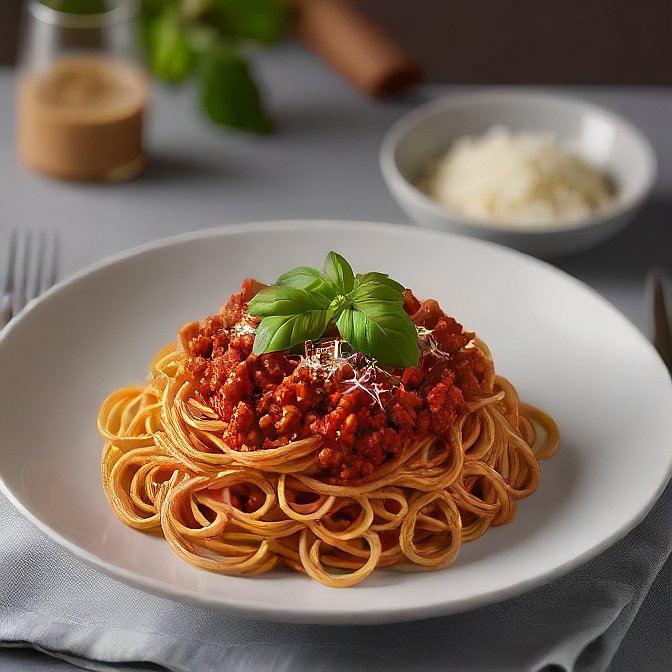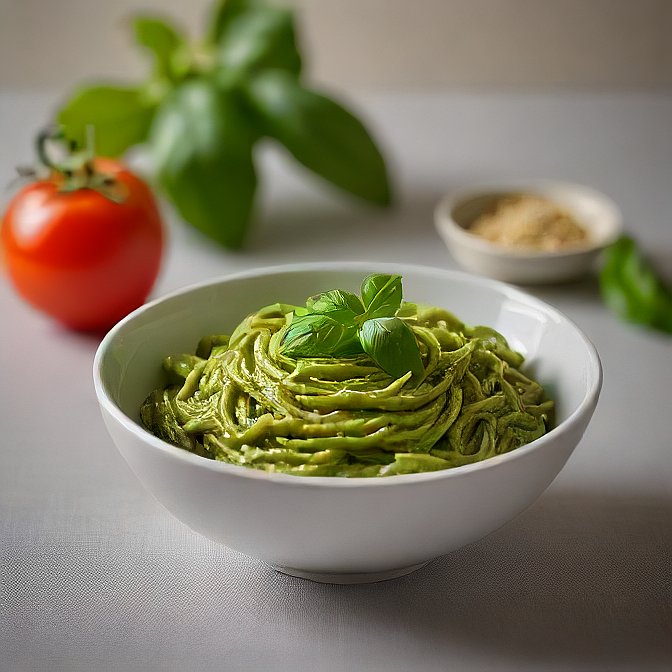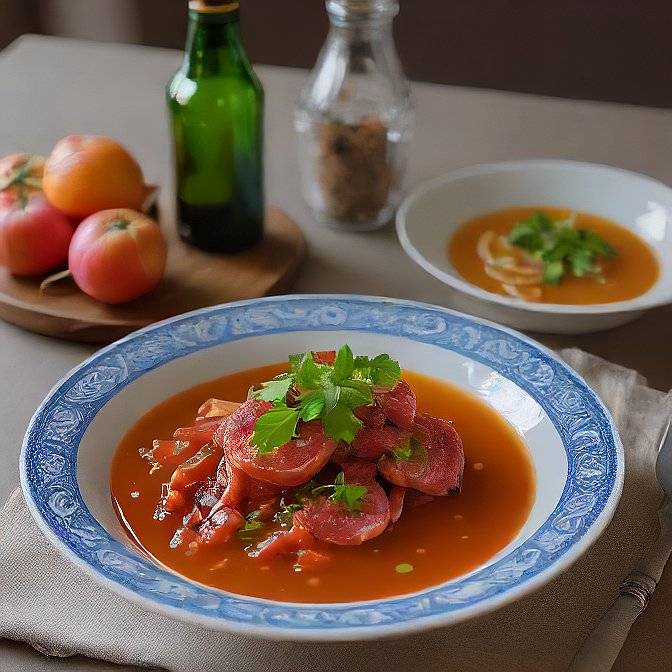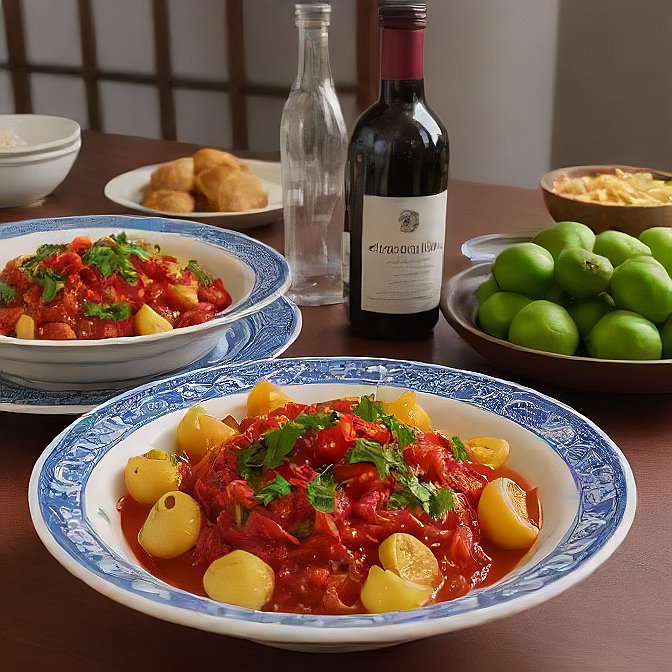Table of Contents
Introduction: Why Italian Sauce Is the Soul of Italian Cooking
The Italian food is famous the world over not only because of its pasta, pizza, or the delicious artisanal breads, but also the rich and tasty sauce, which makes all the Italian food come to life. Such sauces are not just condiments; they are really the history of regions of Italy, ingredients, and the culture of the country.
Whether a traditional basic marinara or the time-consuming lusciousness of a classic ragu, every sauce has its special flavor of Italy. They are not learned through years in a culinary school, and the approach implies a liking for authentic cooking.
These Italian sauce recipes should be learned by every home cook and take your taste just a notch higher in the culinary field. Here we are presenting seven fundamental sauces in Italian cuisine you need to learn as a novice cook and as a more experienced one when you are making a quick supper or when recreating a family meal on a Sunday.
1. Marinara Magic: The All-Purpose Tomato Sauce

Speaking of classic Italian sauce, not many can be as popular and versatile as marinara. This renounced, easy recipe with an intense flavor is a tomato-based sauce and one I use over and over again as an easy standard recipe in the kitchen.
It takes only a few ingredients its make ripe tomatoes, garlic, olive oil, and herbs, and needs no hours to prepare because it is rich in flavors. It is the ideal ingredient in hundreds of Italian dishes.
Marinara is one of the greatest all-purpose Italian sauces, and it tastes magnificent on spaghetti, or it is the best sauce to swipe over a pizza, or to be used as a rich dipping sauce to swipe breadsticks or fried appetizers in it.
Key Tips to Elevate Your Marinara:
- Good tomatoes: San Marzano or other whole peeled tomatoes are the best tasting balance between sweetness and acidity.
- Saute garlic: Frying the garlic slowly to allow it to flavor the oil without burning to a garlicky base.
- Garnish with fresh basil: Add when the dish is about to be served to add some light and natural taste.
It is one of the essentials to pin to your sauce repertoire, whether you are busy and want to have a meal quickly, or need to figure out the core of Italian cooking. When you nail down the recipe, you will never buy it again.
2. Bolognese Brilliance: Rich and Meaty Perfection

Different meat sauces are not equal, and Bolognese will demonstrate it. An expensive Italian standard, it is a luxurious traditional Rag Out Sauce: intensely satisfying, a long-cooked ideal of depth, richness, and savoury delight. Conventional Bolognese has absolutely nothing in common with the standard American style of meat sauce; ground or minced beef is often substituted, and sauces have a lot of tomato as a base.
The secret of Bolognese is the stew-like consistency and mellowed flavor, which is achieved by slowly simmering a mixture of finely chopped onions, celery, carrots, beef (or beef-pork mixture), and a bit of milk or cream. Acidity and complexity are added to the sauce by copiously pouring dry white wine or red wine into the sauce.
How to Make Your Bolognese Stand Out:
- Low and slow: To bring out the prime flavor, use low heat and simmer 2 3 hours.
- Add milk or cream: This dilutes the vine of the tomatoes and makes the sauce silky.
- Deglaze with wine: wine traditionally is white, but red wine will lend more body.
Best Pasta Pairings:
Bolognese is delicious on broad-leaved and flat pasta such as:
- Tagliatelle
- Pappardelle
- Fettuccine
Shy away from the fine pasta- too thin and you will not be able to enjoy this meaty Italian sauce.
After you get the Bolognese right, you have one of those dishes that will never leave you hanging when it comes to either a family dinner or a special event.
3. Pesto alla Genovese: A Fresh, Green Game-Changer

The one thing that comes to our mind whenever we hear the name Italian sauce is the simmering red sauce, but this does not always imply tomato-meat pesto in the case of Italian sauce. Pesto alla Genovese was made in Genoa, Liguria region, and it is a robust raw sauce that seemingly seems thick with the fresh herby flavor.
It is ready by simple composition of fresh basil with pine nuts, Parmesan cheese, garlic, and extra virgin olive oil; hence, it is a delicious nibble. Pesto is another good ingredient which could turn any pasta meal, a sandwich, and even a dish of sautéed vegetables into a much more delicious meal, capable of sprinkling some magic over the sourest of food.
How to Keep Your Pesto Fresh and Flavorful:
- Only young leaves of basil should be used, and older leaves will contribute bitterness.
- Don’t mash it too much, pulse, pulse, pulse, don’t over-blend, the over-blending can make the basil grow dark and the sauce taste grassy.
- Add oil gradually- this is to enable a creamy and emulsified texture that would not overwhelm the herbs.
Check Out: Chinese Dipping Sauces: 7 Must-Have Recipes for Dumplings, Rolls, and More.
4. Alfredo Elegance: Creamy, Comforting, and Quick

Not many Italian sauces are as decadent and comforting as Alfredo. Creamy and luscious and very satisfying, this silky sauce is one of our all-time favorites, whether it is to be had on a weeknight dinner or a special occasion. But you probably did not know that the authentic Alfredo sauce is quite different from what it is in America.
In Italy, authentic Fettuccine Alfredo consists of mere butter and Parmigiano-Reggiano and has no cream going into the wonderful thickness; instead, it is the technique that makes the delicacy. The U.S version, however, may be clotted cream, seasoned with garlic at times, as well as flour to permit it to have a thicker, stronger texture.
Best Pasta Pairings:
- Fettuccine – the excellent marriage, the ideal size of the fettuccine to adhere to the sauce
- Gnocchi – lumpy, mushy potatoes with a creamy flavor
- And goes good with ribbon such as pappardelle or stuffed pasta such as tortellini
Common Alfredo Mistakes—and How to Fix Them:
- It can break the sauce or curdle by overheating cream or cheese. Make the temperature low.
- The pre-shredded cheese is usually mixed with anti-caking agents that do not allow the cheese to melt smoothly.
- Draining pasta without water? A splash is important as it aids the emulsification of the sauce and attaches itself to the pasta noodles.
Regardless of the style and complexity you prefer: the rustic flavour of the Italian original or the sophisticated flavour of the American twist, Alfredo sauce is a meal-time classic that every home chef needs to master, and you can prepare it in less than 20 minutes.
5. Putanesca with Personality: Bold, Briny, and Beautiful

Should you come across an attitude crisis and wish for a sauce to match this attitude situation, then you must go deep down and resort to using the Puttanesca sauce. This sharp and spicy Italian sauce has gained infamy with its salty bop, spicy flavor, and speedy cooking. Having been a Southern Italian creation, it has been described as a last-minute dish that uses what was in the pantry, so it was always perfect when ingredients and time were short, yet flavour was still required.
It is a memorable sauce in the fact that its ingredients are strongly demanding: this is the anchovies, olives, capers, garlic, red pepper flakes, and tomatoes. When combined, they produce an extremely complex savory smell that stimulates all parts of the palate.
Balancing Bold Flavors for Modern Tastes:
- Dilute the saltiness by rinsing olives and capers prior to their utilization.
- To lighten down the sauce and soften the brin, we use a pinch of sugar or some cherry tomatoes.
- Limit the amount of chili flakes in case you do not want it to be hot.
Puttanesca is by far one of the most delicious yet distinctive Italian sauces you can ever make with only a touch of time (below 30 minutes), yet it is bound to surprise and impress with its incomparable taste.
6. Amatriciana Authenticity: A Spicy Tomato Classic

Italian Amatriciana is a rather popular sauce with its origin in the town of Amatrice (the region of Lazio, Umbria, and Marche), and it is the best combination of fat, spice, and acidic cheese. Even though there is a similarity with the other tomato sauces that have lots of tomatoes, this particular sauce has its ingredients placed inside and even has strong tastes of its own strong character as a sauce.
The core of a real Amatriciana is guanciale (cured pork cheek) and Pecorino Romano, two elements that bring the meaty presence and the pungent salty taste. This sauce packs some spicy tomato and chili pepper base to give it some hint of spicy flavors that will make chili fans very excited, without making their taste buds overheat.
Key Ingredients Explained:
- Guanciale: imparts a porky richness which holds up in the pan and becomes crisp as Christmas-there is no substitute in this dish better than pancetta or bacon.
- Pecorino Romano: It is salty and gives a sharp finish. Add in profusion gratins, just before serving.
A Sauce for Heat Lovers:
- Amatriciana receives its spices by means of crushed red chili caps or fresh chili.
- Use peeled tomatoes without the core as foundations that are smooth and concentrated.
- Simmer until the fat in the guanciale has melted with the tomato and the spices.
Best Pasta Pairings:
- Bucatini – thick spaghetti-like pasta having a hole in the middle to catch the sauce.
- Rigatoni – the best to stuff with bits of guanciale
- Spaghetti is a more affordable and still useful option
This is not just another spicy red sauce, but a feast of rustic Italian ingredients, tradition, and strong flavors: Amatriciana! Eat it when you are in the mood to have something comforting but with a bit of burning.
7. Ragù alla Napoletana: Sunday Sauce Tradition

Although initially Bolognese tends to be the first that comes into mind when we think about meat-based Italian sauces, Ragù E’s Napoletano is another great experience when it comes to the plates and dishes. The classic Naples sauce is the most important part of the Southern Italian culture and is lovingly called the Sunday Sauce due to the contribution it makes to the enormous family dinners that are slow-cooked.
Neapolitan ragu is constructed on full pieces of meat: beef short ribs, pork shoulder, or braciole are placed in a casserole together with some tomatoes, chopped, and a few cloves of garlic, and allowed to cook slowly until they melt. It ends up being a thick tomato-based sauce with the meat and herbs bringing out the deep flavors.
How It Differs from Bolognese:
- It does not use ground meat, but whole meat
- more tomato, brighter, tangier taste
- Contains red wine and scent-laden herbs such as bay leaves
Slow-Cooking Secrets and Variations:
- Make the meat brown, and then add tomatoes to bring out all the goodness in the meat.
- Low and slow, 4-6 hours, is best to be rich
- To enrich the base of the sauce, a sprinkling of wine or a spoonful of tomato boy is added
Family-Style Serving Tips:
- Discard the meat, cut it into slices, and serve it as a second course
- The first course would be to toss the sauce with pasta such as ziti, rigatoni, or paccheri
- It is always best to top off with a heavy grating of Pecorino Romano or Parmigiano-Reggiano
Ragù alla Napoletana is no everyday sauce, though. A food, family, and tradition-loving cook in the making that brings the whole lot of people to the table..
Conclusion: Mastering Italian Sauce Is Mastering Italian Cooking
Italian great food begins with great sauce. Whether it is the spiciness of marinara or the depth in Bolognese, the powerful intensity of puttanesca, or the clean depths of pesto, it is easy to come in and find Italian sauces that can transform into original, tasty dishes that anyone can prepare at home.
Learning these 7 classic Italian sauces, you will not learn the recipes only, but will comprehend Italian tradition in cuisine better. Just like a quick read-to-eat dinner when you need to impress a special someone or slow slow-cooked Sunday meal when you want to feed the entire family, these sauces will form your kitchen staples.
Therefore, when next you want to eat pasta, avoid taking a shortcut with a jarred sauce. Rather, select your sauce wisely, match it with proper pasta, and cook with certainty.
For more info: Click Here.
FAQs About Italian Sauce
1. What is the difference between Italian marinara and Bolognese sauce?
Marinara is a cheap, easy sauce that is cooked in a short period through the use of tomatoes, garlic, olive oil, and herbs. A simmered meat sauce called Bolognese or Raggu, a Bolognese; it consists of ground beef or pork, flavorings, and milk or cream with a drop of tomato. Marinara is cool and fresh, but Bolognese is heavy and watery.
2. Can I freeze homemade Italian sauces?
As your question is in the affirmative, the great majority of Italian sauces can be frozen. Such sauces as marinara, puttanesca, and amatriciana can be refrigerated within 3 months. Pesto may be frozen in small volumes (as ice cube trays) and covered in olive oil to avoid browning. Sauces such as Alfredo, made of cream, should be savored as quickly as possible, but may be stored in the freezer being reheated properly.
3. What’s the best way to make Italian sauce taste authentic?
The first one that functions as a quality ingredient of the D team is San Marzano tomatoes, fresh herbs, real Parmigiano-Reggiano, and extra virgin olive oil. You should not save money and make use of canned things such as jarred garlic or shredded cheese. They are supposed to simmer the sauce and season it in the process, and they must never overlook the pasta water when bringing the latter into the sauce alongside the noodles. It is simple and well-maintained, hence genuine.





